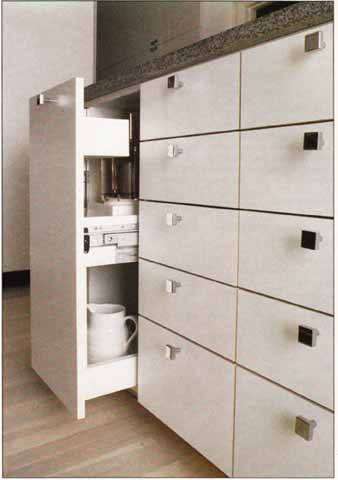Adhesives bond two pieces of wood, sometimes making the joint between them stronger than the wood it self They are often used in conjunction with other fasteners, particularly with nails and dowels, which by themselves don ‘t always have enough grip ping power
On a small project that will not be subjected to great strain or abuse, the proper screws will probably secure the joints just fine. Still, some carpenters use glue on any project that they are not planning to disassemble later.
Two basic types of adhesives are employed in woodworking: exterior glues, which are waterproof, and interior glues, which are not. In most cases, a good white or yellow glue will work well for a bookcase. White glue—the familiar, easy-to-use house hold glue in the plastic squeeze bottle—is a polyvinyl compound. Yellow glue is an aliphatic resin designed especially for woodworking. Usually labeled carpenter’s wood glue, it resembles the white type but this yellow glue is more waterproof, more stable, and equally easy to use.
If you live in a particularly humid area, or if you are building a book case for a damp location such as a basement recreation room, consider using a moisture-resistant adhesive, such as resorcinol or plastic-resin glue. These adhesives are more trouble to work with, however, and the extra bother may not be worth it.
Plastic laminate is bonded to cabinetry with contact cement. Use this cement in a well-ventilated area. Coat the case and the back of the laminate, let the cement set, then join the two, applying pressure with a laminate roller or rubber mallet.

Plastic laminate is one of the most professional-looking finishes
for wood not fine enough to stain. First attach fractionally oversized
pieces with contact cement, then use a router with a trimmer bit to
cut laminate to exact size.
Full guide: How to Plan & Build Bookcases, Cabinets & Shelves
